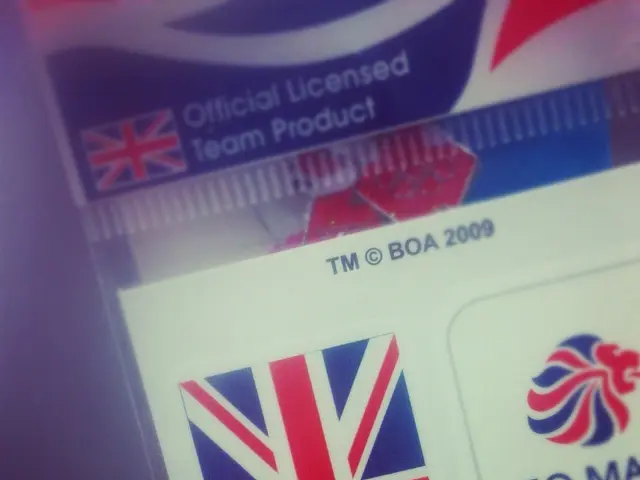Stepping Up the Game: Securing Memory in Computer Systems
Critical Moment in Memory Security: Balance Altered
The realm of computer security has been rocked by a series of devastating cyberattacks over the past decade, with sensitive data stolen, public transportation systems halted, and hospitals paralyzed by ransomware. As we stand on the precipice of a new era, we find ourselves confronted with technologies mature enough to tackle the very vulnerabilities in memory safety that have caused these devastating effects.
Hamed Okhravi, a cybersecurity expert at MIT Lincoln Laboratory's Secure Resilient Systems and Technology Group leaves no doubt, "We are at a tipping point – now is the right time to move to memory-safe systems."
In an op-ed published in the Communications of the ACM in 2025, Okhravi assembled a team of 21 luminaries in the field of computer security to articulate a comprehensive plan for achieving universal memory safety. They advocated for the adoption of a standardized framework as the crucial next step towards integrating memory-safety technologies across all types of computer systems, from aerospace to consumer electronics.
Memory-safety vulnerabilities arise when a program performs unintended or erroneous operations in memory. Such operations are common, accounting for an estimated 70% of software vulnerabilities. If attackers gain access to this memory, they may be able to steal sensitive information, alter program execution, or even take control of the computer system.
These vulnerabilities are most frequently found in programming languages such as C and C++. Even a minor oversight by a software developer, perhaps a single line of code in a multi-million line system, can be all an attacker needs to exploit the system. In recent years, languages like Rust have emerged as an answer to this problem, offering memory safety guarantees. However, these languages require massive system rewrites, which can be costly and complicated.
Okhravi focuses on the national security implications of memory-safety vulnerabilities. Systems developed by the U.S. Department of Defense are under particular scrutiny, given that they contain billions of lines of legacy C or C++ code. The National Security Agency and federal government have increasingly urged technology developers to eliminate memory-safety vulnerabilities from their products. Security concerns stretch beyond military systems, impacting everyday consumer products as well.
"Cell phones, for example, might not be immediately important for defense or warfighting, but if we have 200 million vulnerable cell phones in the nation, that's a serious matter of national security," Okhravi says.
Memory-Safe Solutions Emerge
In recent years, several technologies have been developed to help patch memory vulnerabilities in existing systems. As the guest editor for a special issue of IEEE Security and Privacy, Okhravi solicited articles from top contributors in the field to highlight these technologies and the ways they can work together in synergy.
Among these new memory-safety solutions are TRACER and TASR, created at Lincoln Laboratory, which are software products for Windows and Linux systems, respectively. These tools reshuffle the location of code in memory each time a program accesses it, making it virtually impossible for attackers to find exploits. After being licensed by cybersecurity and cloud services companies, these moving-target solutions have been introduced to numerous systems.
"These technologies are quick wins, enabling us to make a lot of immediate impact without having to rebuild the whole system. But they are only a partial solution, a way of securing legacy systems while we are transitioning to safer languages," Okhravi explains.
Moreover, innovative work is underway to make the transition to safer languages easier. For instance, the TRACTOR program at the Defense Advanced Research Projects Agency is developing AI tools to automatically translate legacy C code to Rust. Lincoln Laboratory researchers will evaluate this translator for use in DoD systems.
Okhravi and his coauthors acknowledge in their op-ed that the timeline for full adoption of memory-safe systems is long—likely spanning decades. It will necessitate a combination of new hardware, software, and techniques, each with its own adoption paths, costs, and disruptions. Organizations should prioritize mission-critical systems first.
"For example, the most crucial components in a fighter jet, such as the flight-control algorithm or the munition-handling logic, should be made memory safe within five years," Okhravi suggests. Less important subsystems may have a longer timeframe.
Memory Safety at Lincoln Laboratory
Lincoln Laboratory remains on the forefront of advancing memory-safety technologies. The Secure Resilient Systems and Technology Group has prioritized adopting memory-safe programming languages, investing in group-wide use of Rust for over six years. Rust's strong memory safety guarantees, coupled with its speed and ability to catch bugs during development, make it particularly well-suited for building secure and reliable systems. The Laboratory has been using Rust to prototype and transition secure components for embedded, distributed, and cryptographic systems where resilience, performance, and correctness are mission-critical.
A Framework for the Future
As new computer systems are developed, developers require a framework of memory-safety standards to guide them. At present, attempts to request memory safety in new systems are hampered by the absence of clear definitions and practices. Okhravi emphasizes the importance of a technology-agnostic standardized framework that offers specific timelines and sets of requirements tailored to different types of systems.
"In the acquisition process for the DoD and even the commercial sector, when we are mandating memory safety, it shouldn't be tied to a specific technology. It should be generic enough that different types of systems can apply different technologies to achieve the goal," Okhravi explains.
Filling this gap necessitates building industrial consensus on technical approaches and collaborating with government and academia to make this vision a reality. The op-ed and the consortium of experts will push for standardization from their positions across industry, government, and academia. Contributors to the paper represent a diverse range of institutes, from the University of Cambridge and SRI International to Microsoft and Google. Collectively, they are building momentum to finally eliminate memory vulnerabilities and the costly damages they cause.
"We are seeing a shift in mindset, partly due to the maturation of technology and partly because of such consequential incidents. We hear all the time that such-and-such breach cost billions of dollars. Meanwhile, making the system secure might have cost 10 million dollars. Wouldn't we have been better off making that effort?" Okhravi says.
Media inquiries: contact Kylie Foy.
cyber security Secure Resilient Systems and Technology* Memory-safe programming languages* memory safety* technology frameworks* cybersecurity threats* national security* AI security* energy security* critical infrastructure* doD systems*
The Shifting Landscape of Memory Safety in Computer Systems
Memory safety is becoming a critical concern in the computer security landscape, as vulnerabilities in memory management can jeopardize sensitive data and system functionality. Recent advancements and proposed solutions aim to address these issues.
- Memory-Safe Programming Languages: New languages like Rust and Go provide strong memory safety guarantees, making them popular choices for secure software development.
- Technology-Agnostic Frameworks: Frameworks like Carbon Black's Linux protection kernel and Google's OSS-Fuzz offer moving-target protection, reconfiguring system components to thwart evolving attacks.
- Government Initiatives: The White House's memorandum on cybersecurity emphasized the need to improve memory safety in software to reduce the prevalence of cyberattacks[1]. Attention to memory safety has increased in organizations like NIST and IEEE through research grants, workshops, and guidelines for secure software design[2].
- Awareness and Collaboration: Efforts like the Memory Safety First Working Group and the Memory Safety for Linux Working Group aim to foster collaboration among developers, researchers, and organizations to promote memory safety best practices and drive progress on memory-safety standards[3][4].
- AI-Specific Threats: The emerging field of artificial intelligence brings its own unique challenges, necessitating research into AI memory safety threats like learning stream poisoning[5]. This research aims to develop robust countermeasures and secure AI development practices.
- Integration into Development Lifecycles: Ensuring that memory safety is integrated into the software development lifecycle from the outset can help prevent vulnerabilities from being embedded in the first place. This includes the adoption of secure coding practices and the use of tools to identify and fix vulnerabilities early in the development process.
- Policy and Governance: Establishing clear policies and governance structures for memory safety in software development will help enforce best practices, reduce the number of exploitable vulnerabilities, and improve overall cybersecurity.
References:
- https://www.whitehouse.gov/presidential-actions/executive-order-strengthening-cybersecurity-federal-networks-critical-infrastructure/
- http://www.nist.gov/itl/ssd/cybersecurity/smart-cybersecurity-standards-and-best-practices.cfm
- https://groups.google.com/forum/#!forum/memory-safety-first
- https://lists.linuxfoundation.org/pipermail/memory-safety-for-linux/
- https://www.usenix.org/legacy/event/usenixsec17/tech/posters/wang.pdf
- As cybersecurity attacks continue to harm sensitive data and public infrastructure, experts like Hamed Okhravi at MIT Lincoln Laboratory are advocating for a shift towards memory-safe systems to mitigate these issues.
- In a 2025 op-ed, Okhravi and a team of 21 experts outlined a comprehensive plan for achieving universal memory safety, emphasizing the importance of a standardized framework to integrate memory-safety technologies across various systems.
- Technology solutions like TRACER and TASR, developed at Lincoln Laboratory, reshuffle the location of code in memory to make it harder for attackers to find exploits, offering a quick solution for securing existing systems.
- To facilitate the transition to safer languages like Rust, the Defense Advanced Research Projects Agency is developing AI tools to automatically translate legacy C code, an effort led by Lincoln Laboratory researchers.
- A collaborative approach is crucial to drive progress on memory-safety standards, with organizations like the Memory Safety First Working Group and the Memory Safety for Linux Working Group fostering collaboration across academia, government, and industry.








